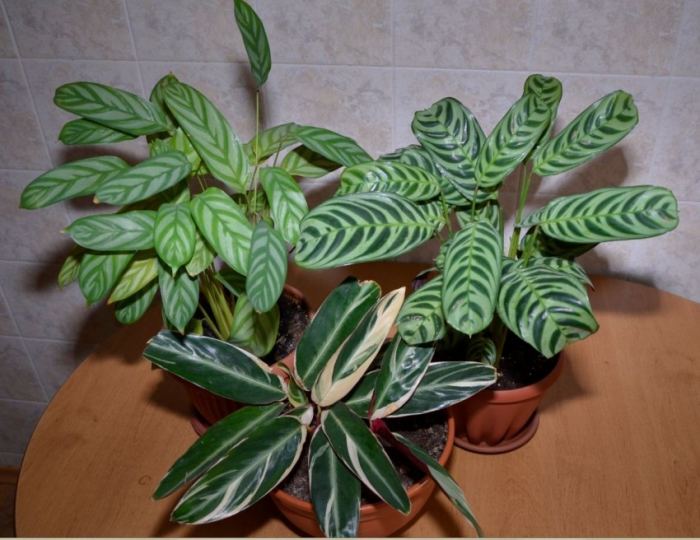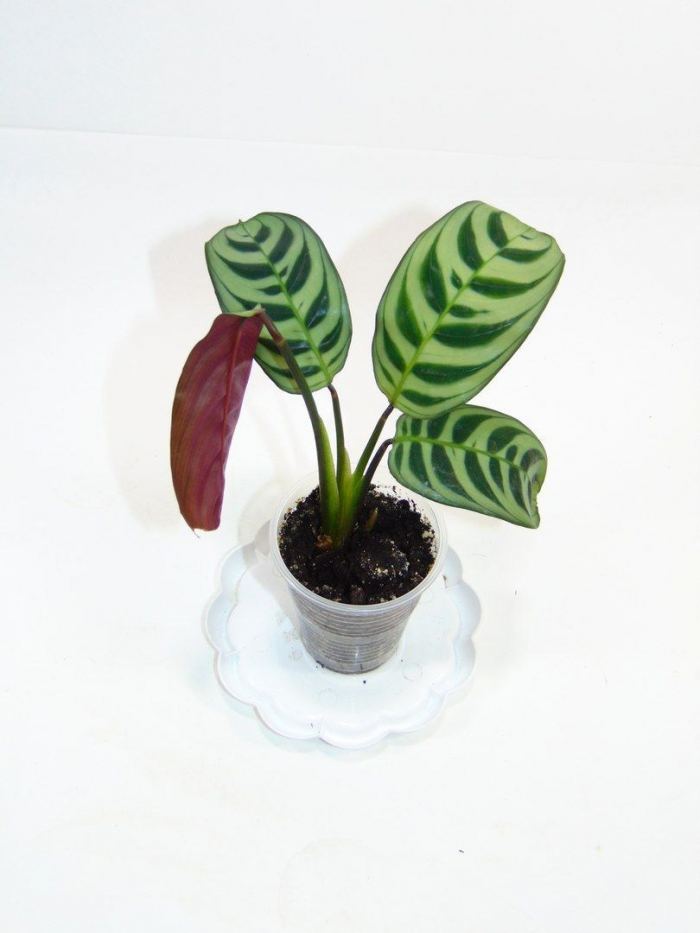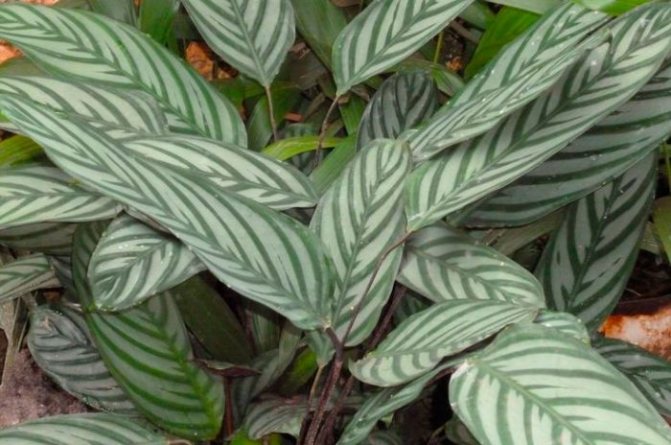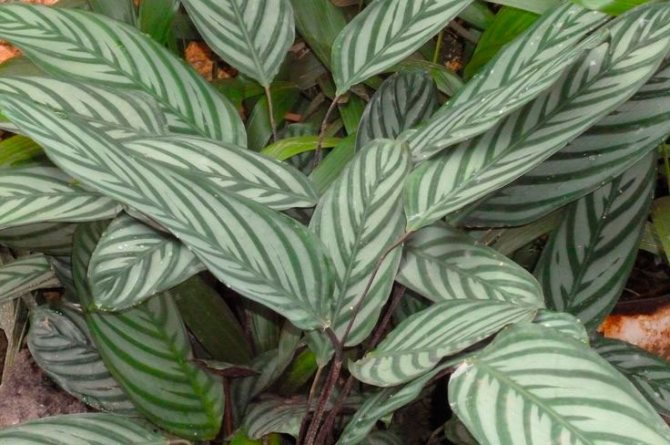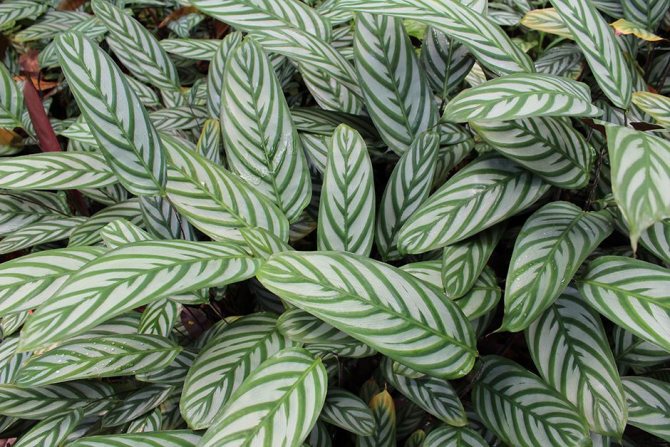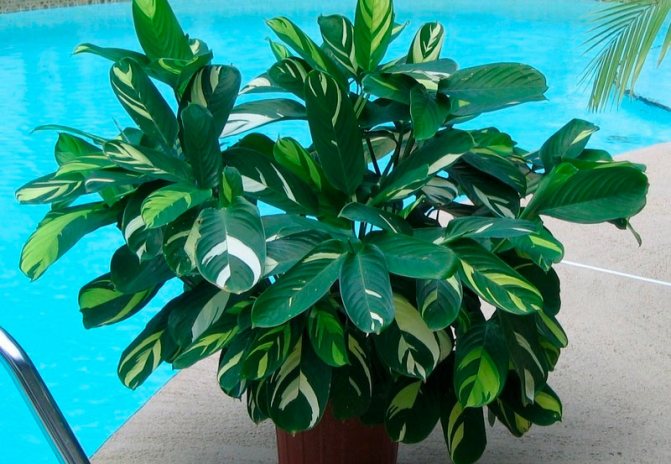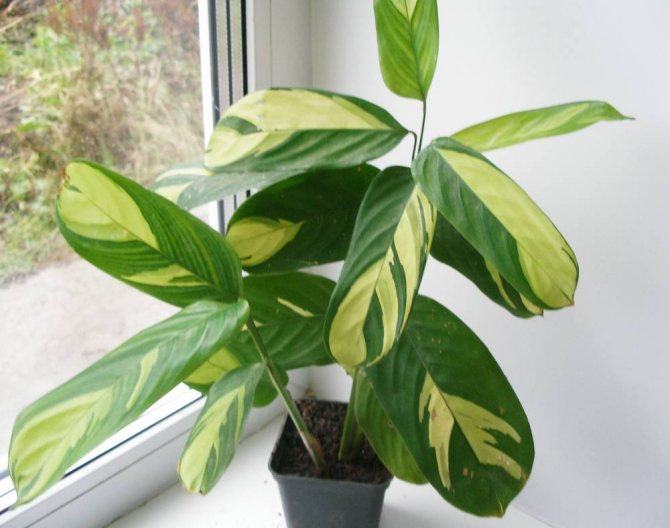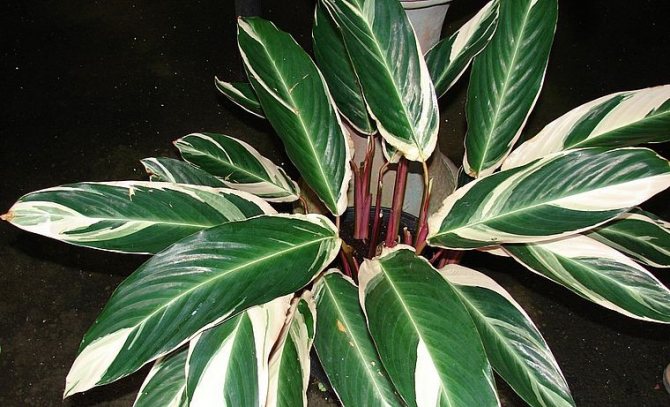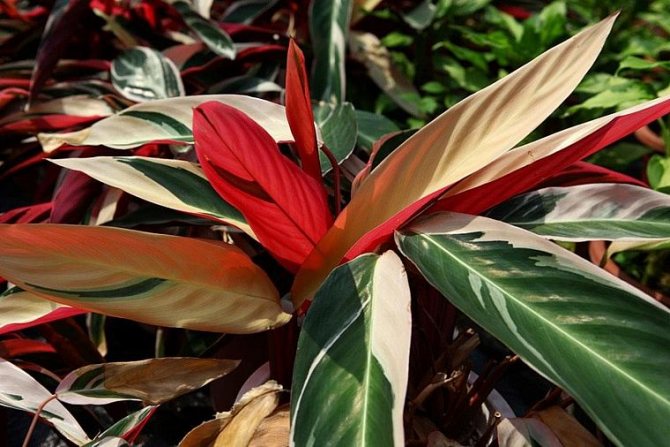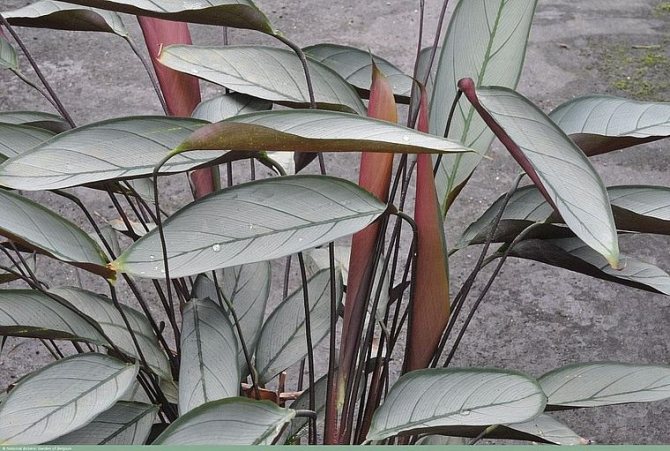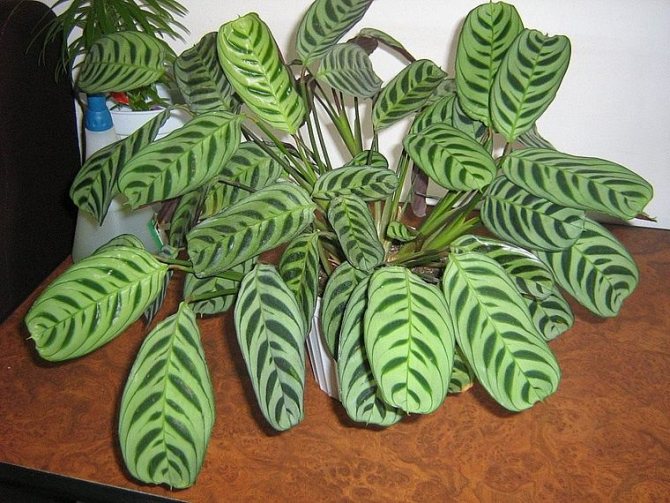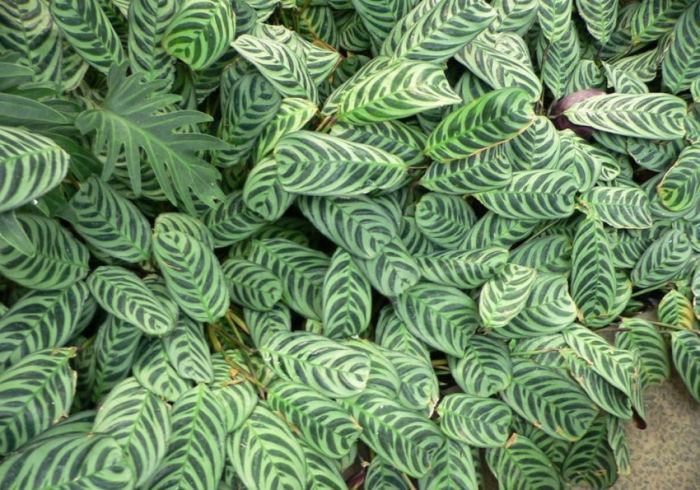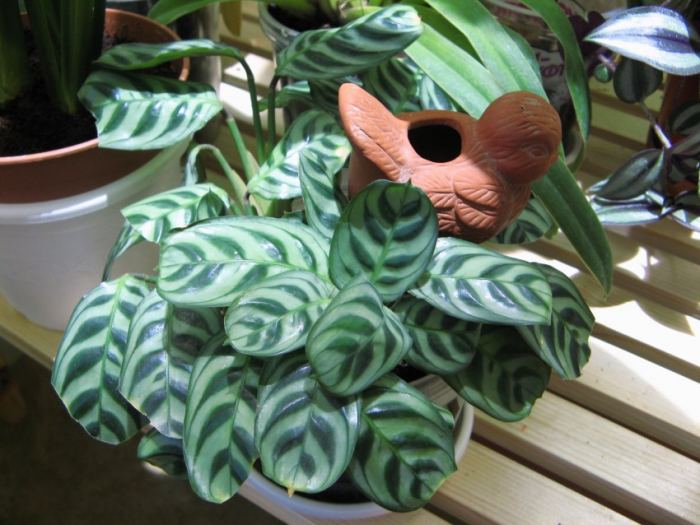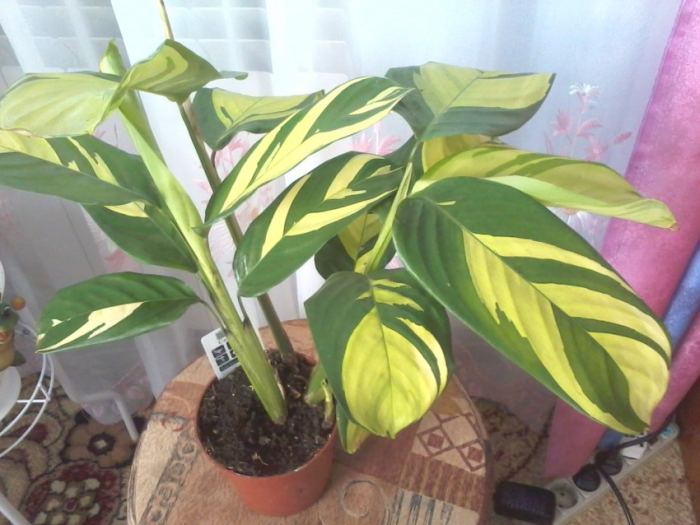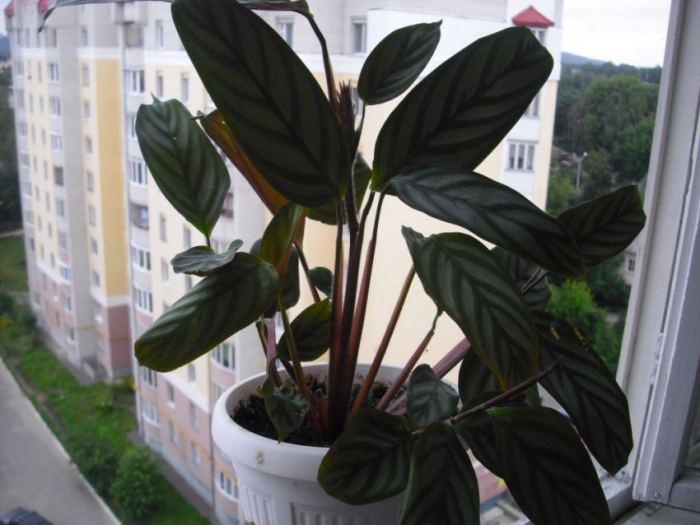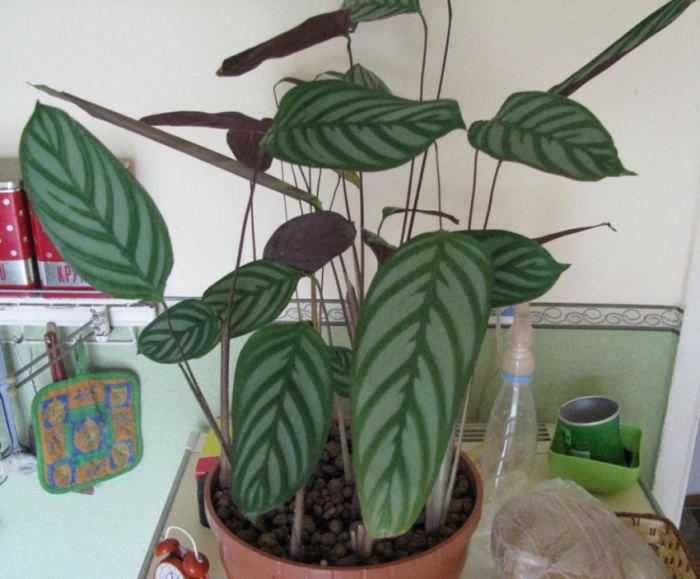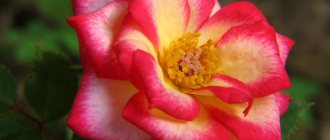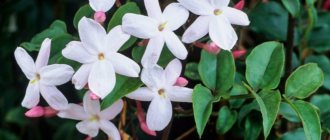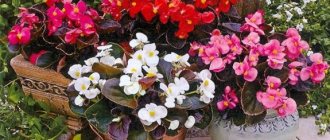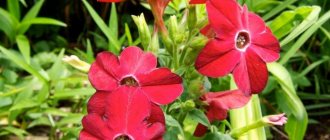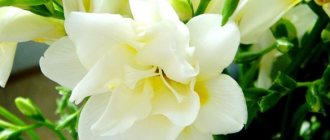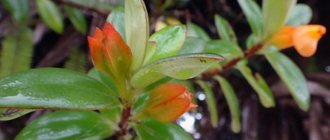General characteristics of the plant
The homeland of the amazing ktenent flower is the southern part of the American continent. This species, which belongs to the arrowroot family, has large original leaves arranged asymmetrically, the total length of which is from 20 to 45 cm.The color range is dominated by green shades, diluted with spots and veins of white and pink flowers.
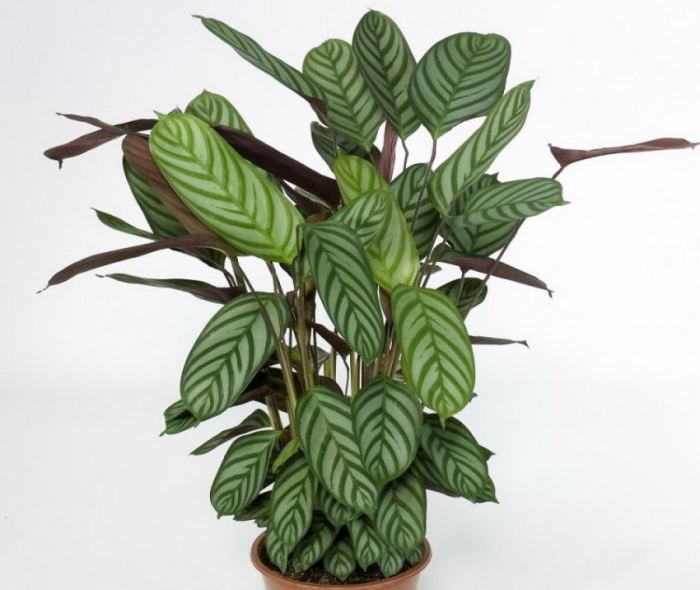
The peculiarity of this species is the presence of regular geometric patterns that are rarely found on the plant, as well as ultra-thin, transparent leaves. Flowers ktenants are collected in large ears. The plant can grow in height from 60 to 100 cm.


Types with photos and descriptions
As mentioned above, there are about 15 species of Ktenanta. Therefore, before you go to buy it in a flower shop, it would be more correct to get acquainted with the main ones. Then it will be much easier to make a choice among the huge assortment and variety offered by flower salons.
Ktenant Oppenheim


It is the most hardy variety and is the most popular among florists. It has a gray-green color of dense and large leaves with irregular stripes along them. The underside of the leaf is colored red.
Ktenant Lubbers


Quite an interesting variety with emerald-colored leaves and asymmetrical patterns on them in yellow and light green tones. They are in the form of blotches or feathers. The height of this species is from 50 to 80 cm.
Ktenanta Setosa (or omitted)


This species has an average height not exceeding 100 cm. The dark green foliage is colored with silvery and purple blotches that radiate from the middle of the leaf and give the impression of brush strokes.
Ktenanta compressed


It is valuable in that it can do without water and ultraviolet rays for a long time. The bush consists of large, pale green leaves with thin veins. This is the most hardy species and is suitable for beginner flower growers.
Ktenanta Burle-Marksi
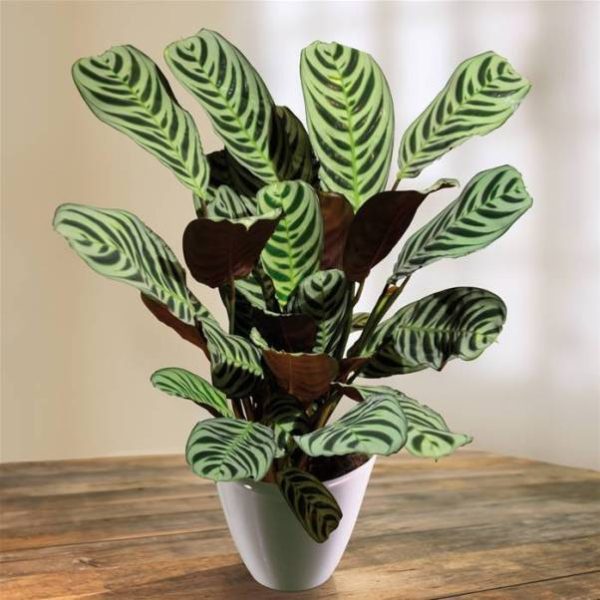

It grows no higher than 40 cm and has thick and durable silvery-gray leaves with light green veins.
Conditions for a moisture-loving tropicana
When choosing where to put a pot with a ktenant, remember her innate habits: love of warmth, humidity and diffused light. Direct sun, hot, air-drying battery, gusts of cold air - this is not for a tropical plant. And the windowsill is not the best place for ktenants: in spring and summer - too bright light, harmful to the leaves, in autumn and winter - cold, harmful to the roots.
Seasonal conditions (table)
| Season | Lighting | Humidity | Temperature |
| Spring | Ktenants prefer diffused light, they feel good in light partial shade. The best growing areas are the east and west sides. Or south, but not by the window, but in the back of the room. Shade from the midday sun. Direct sun will discolor the elegant foliage and make it smaller. | Very high, 80–90%. Take care of hydration.
| Moderate, + 20–220 C. Protect from drafts. Ktenanta does not tolerate sudden temperature fluctuations. |
| Summer | Moderate and slightly higher, + 20-26 0С. Protect from heat and temperature extremes. | ||
| Fall | |||
| Winter | Well lit areas, but away from direct sun. Add artificial lighting. Daylight hours for ktenants should last 14-16 hours. | High, 80–90%. Do not place the plant next to heating appliances. Spray the leaves and stems at least 3 times a week. Humidify the air in any way you can. | Moderate, 18–200 C, slightly cool. It should not fall below +15. |
About florarium for indoor flower
The younger the ktenant, the higher the humidity should be, the florists noticed. Miniature varieties are also more moisture-loving than tall ones. A beauty from tropical swamps often lacks moisture in apartments where the air is dried by heating devices. She loves the greenhouse environment that can be created in an open florarium or aquarium garden.


Ktenanta feels great in a wet florarium
However, tall ktenants can be grown there until a certain age, as long as the size allows. And compact, slow-growing varieties will become permanent residents of the jungle in the aquarium. Match plants with the same conditions and plant them together. There is almost no need to look after them. The inhabitants of the florarium themselves create a microclimate that they like.
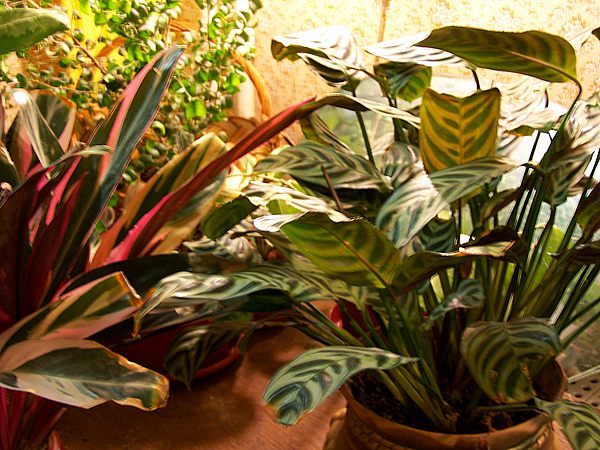

Compact varieties of ktenants grow very well in an open or closed florarium
How to make an open florarium
- Take a clear container or aquarium.
- Fill the bottom with drainage material, top - with a porous soil substrate.
- Plant moisture-loving miniature plants.
- Moisten the plantings, cover the florarium with a lid or just glass.
- Place it in a warm and bright place, without direct sun.
- Ventilate the mini jungle if condensation occurs.
- Water your plants and clean your aquarium every few months.
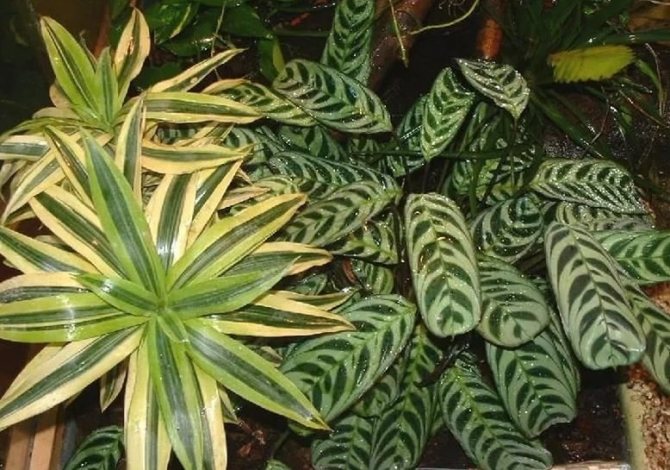

Plants with similar requirements should be neighbors in the florarium.
Neighbors ktenants on the florarium
If you decide to plant an aquarium or bottle garden, choose plants with the same preference. Together with the ktenant, you can plant other arrowroots, royal begonia (small-leaved), calamus, ferns, peperomia, beautiful neanthus, pilea, fittonia, crotons, rheo.
The smallest ktenants, for example the Amagris variety, can be grown in a bottle garden, as the indoor florarium is sometimes called. Unlike open (aquarium) containers, they are taken with a rather narrow neck, which is tightly closed with a lid. After planting, the bottle garden is watered only once, and then sealed and not opened. Plants live in a closed ecosystem, independently providing themselves with air and moisture. A garden in a bottle looks very original, it does not need to be looked after. However, taste and dexterity will be needed to place the green inhabitants in a picturesque and neat way.
Video: master class on planting a florarium
Fertilizer
In the autumn-spring period, the plant needs additional soil feeding. Complex mineral supplements should be applied twice a month, in winter - once for 5-6 weeks.
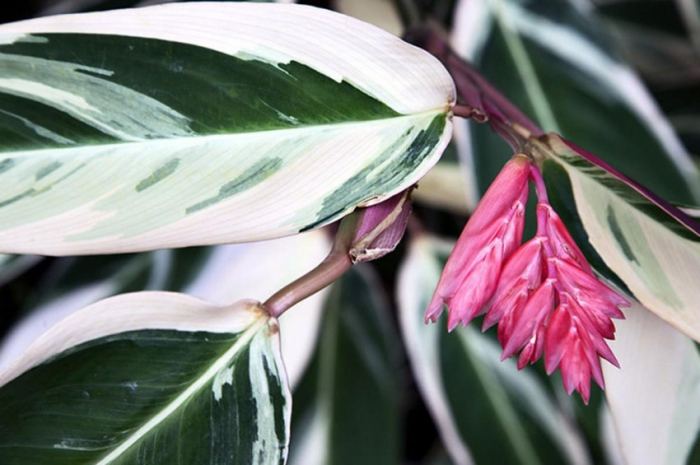

Young flowers should be transplanted once a year, mature ones - 2-3 times less often, this should be done in the last month of spring or in the first summer.
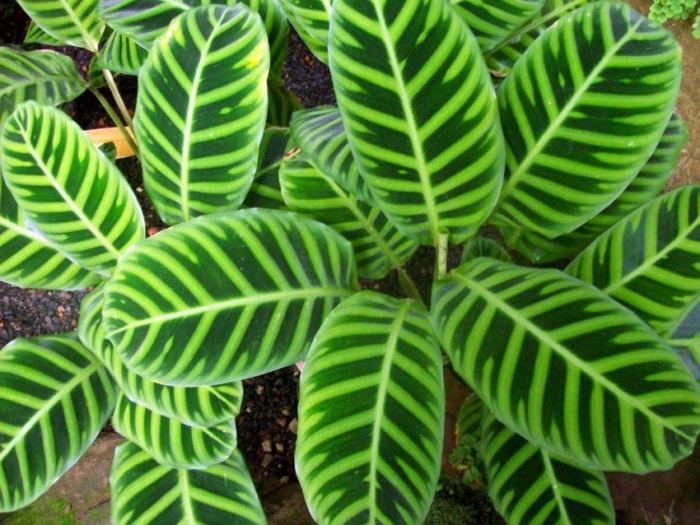

Diseases, pests ktenants
Various pests can get to the ktenant from other plants. This applies not only to indoor flowers, but also to bouquets.To avoid infection, all new bushes should be placed separately from those acquired long ago, arranging quarantine for 3-4 weeks.
| Disease | How to determine | Decision |
| Aphid | Insects are light green or black. The posterior part of the leaf plate of young shoots is affected. |
|
| Shield | The appearance of growths on the entire surface of the plant. Around the affected areas, the flower turns yellow. |
|
| Mealybug | Stains like flour marks. The foliage begins to turn yellow, the affected areas dry out. |
|
| Whitefly | Flying pests of white color. They take off if disturbed by hitting a flower. |
|
| Spider mite | Cobweb on the stems, brown spots with a yellow halo on the back of the leaf plate. |
|
| Root rot | The development of mold in the soil, the appearance of an unpleasant odor, the spread of brown and black spots on the lower part of the stems. |
|
Breeding features
Ktenanta reproduces vegetatively as a result of rooting cuttings or dividing a bush. The best period for this is late spring, early summer, when it is necessary to cut young cuttings consisting of several leaves. A month and a half later, the root system appears on the cuttings.


The new plant can be planted in soil for rooting. When dividing an adult bush into several parts, it is necessary to immediately plant the newly formed plants in pre-prepared soil, water abundantly, you can create a greenhouse effect before the first leaves appear.
The most popular member of the family
Indeed, Ktenant Oppenheim is the most frequent visitor to living quarters and offices. It can grow up to 1 meter in height and leaves up to 40 cm in length. A stunning plant, delicate and bright at the same time. The leaves are oblong, dark green. They have light green and silvery white stripes. The reverse side is purple. A large bush can decorate any room. But besides this variety, the family includes several more:
- Berl-Marx. The height of this plant reaches 40 cm. The leaves are light green with dark stripes and a purple underside. It blooms willingly, throwing out a creamy white inflorescence.
- Ktenanta Lubbers - reaches 75 cm in height. A distinctive feature is the beautiful yellow strokes that resemble feathers.
- Ktenanta is compressed - reaches a meter in height and resembles a palm tree. It is a long, bare stem that ends in a knot of 4 leaves.
But today we are interested in Ctenant Oppenheim. Caring for this plant is quite simple, but you need to take into account some features and nuances. All other varieties have been mentioned for comparison, so that you can distinguish between them.
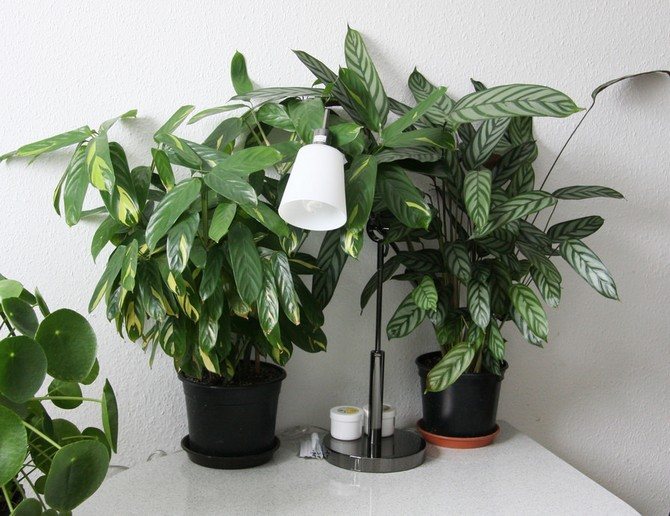

Improper care
With improper care, the plant begins to hurt and may die. The main problems and their consequences:
- wilting - excessive soil moisture, rotting of the root system, lowering the air temperature in the room;
- drying of leaves, slow growth - drying out of the soil;
- yellow-brown color - too lean soil;
- curled leaves, the presence of spots - drying out of the earth, insufficient amount of moisture;
- leaf fall - high temperature or over-watering.


Flower energy
In folklore, there is a belief that the ktenanta has an amazing power that protects the family and strengthens the bond between spouses. That is why it is recommended to put a flower in the bedroom.
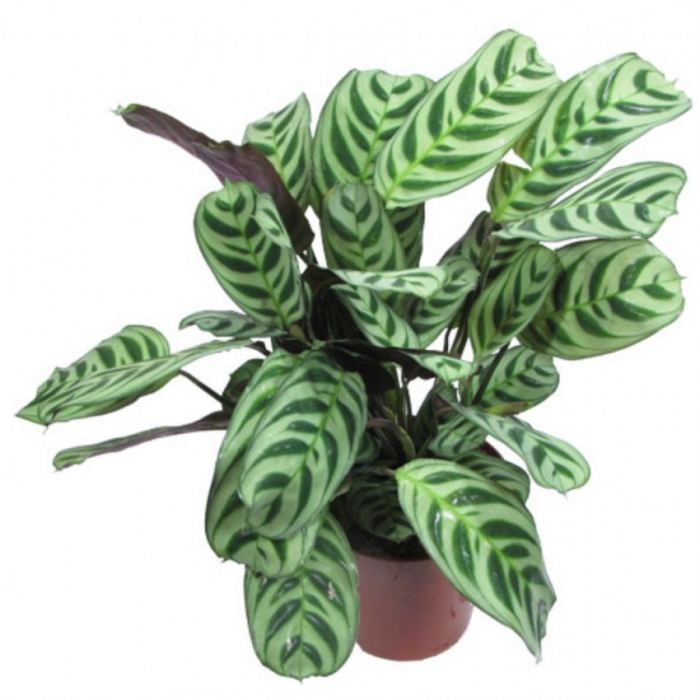

If the plant is located in the nursery, it will calm the baby, become a kind of amulet. The plant is credited with healing properties, according to which it relieves fatigue, stress, depression, and soreness.
